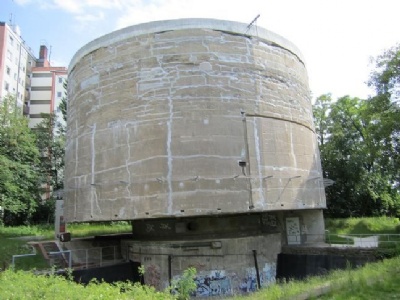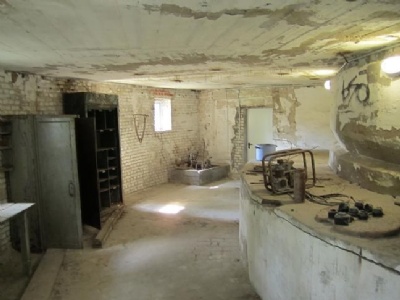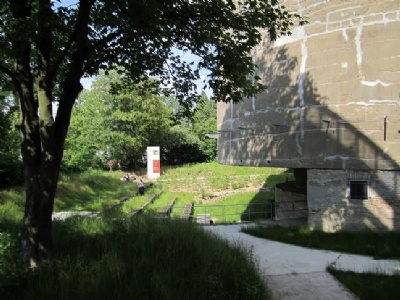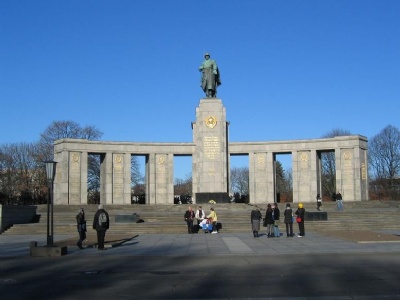Germania
Early in the morning of June 23, 1940, Hitler visited Paris with a group of architects, including Albert Speer, Hermann Giesler and sculptor Arno Breker. The visit lasted no more than about three hours but Hitler had time to visit Trocadero (near the Eiffel Tower), Sacre Coeur, Madeleine church, Opera, Champs Elysses and of course Napoleon’s tomb at Les invalides. Hitler was extremely impressed by the city’s neoclassical architecture and cultural decoration and said that the city must not be destroyed, it provided inspiration but would still fade in comparison with the future Berlin. The idea was that Berlin would be renamed Germania and become a world capital (Welthauptstadt) and be completed in 1950. In 1937, Hitler appointed Albert Speer General Inspector for the reconstruction of the capital.
The new Berlin would revolve around the five-kilometre North-South axis. At the far south of the axis, Sudbahnhof was to be located and from there it was a gigantic parade street all the way up to Nordbahnhof. Along the parade street were to be erected monumental buildings in which civil and military authorities would be housed. Large cultural buildings such as operas, theatres and museums were also to be built. The Parade avenue would be car-free and an underground highway was planned throughout the area. It is mainly two large construction projects that differ from others. First it’s the giant Arc de Triomphe at the southern end. The architecture is strikingly similar to the Arc de Triomphe in Paris, but with the difference that Germania’s Arc de Triomphe would weigh an enormous 2.5 million tons and be almost a hundred meters high. If it had been realized, the Paris Arc de Triomphe could have fit the opening of the Arc de Triomphe of Germania. The Triumphal arch was intended to be a large memorial where the names of the approximately 1,800,000 German soldiers who died in the (first) world war would be engraved in the walls.
To investigate this, a Schwerbelastungskörper was built in 1941, weighing 12,650 tons, was 32 meters high and was placed at the intended location of the Arc de Triomphe. 18 Meters were below ground and the pressure that Schwerbelastungskörper generated corresponded to the pressure that the intended Triumphal arch would generate, in this way one could check if the ground was holding. If the Schwerbelastungskörper’s pipes did not drop more than six centimeters, the ground met the requirements of the Triumphal arch, but during the three years of the measurements, it dropped 18 centimeters. When Speer told Hitler this, he just ignored it. Only one of the planned Germania buildings was realized and it was Haus der Fremdenverkehrs. The building was badly damaged during the war and later demolished. No other construction projects intended for Germania were implemented. Only some ground works, tunnel constructions and the Schwerbelastungskörper mentioned above were started or implemented. Speer had a large model of Germania built, which Hitler on several occasions admired, commented, sketched and suggested changes.
Current status: Museum (2011).
Address: General-Pape-Strasse, 121 81 Berlin (Schwerbelastungskörper).
Get there: Metro to Platz der Luftbrücke or Julius Leber brücke Station.
Follow up in books: Speer, Albert: Inside the Third Reich (1969).




Due to nearby residential buildings, it was not possible to blow up Schwerbelastungskörper. Since 1995 it is a historic landmark and a small museum has been established on the site that informs about the Nazi plans with Welthauptstadt Germania. Berlin was by no means the only city Hitler had big plans for, but they were by far the largest and most extensive. In fact, throughout Germany and Austria, there are buildings that the Nazis built and that remain without anyone actually reflecting on them. One such is the Art museum (Haus der kunst) in Munich. In Munich, Hitler had also planned to let Hermann Giesler build a mausoleum based on the Pantheon as a model where he (Hitler) would be buried and in Linz it was planned that Speer would build a gigantic Führer museum. Not a museum dedicated to Hitler, but a museum with (Aryan) objects stolen from other states. Both the mausoleum and the museum were never realized.
Hitler had a view that large monumental structures were a reflection of the ruler who had them built, the larger building, the greater ruler. Most of the construction projects planned and realized by the Nazis bear neoclassical features and originated from ancient Greece or the Roman Empire. Hitler was enchanted by the magnificence of which they were characterized, despite the fact that the culture they represented has long since disappeared. That’s what Hitler thought when he sketched buildings, that they, like the ruins of ancient Greece and the Roman Empire, would fascinate and enchant future generations and always be a reminder of a historically magnificent culture. The difference was that Germania would arouse an even greater admiration in posterity than Acropolis, Colosseum and pyramids do.